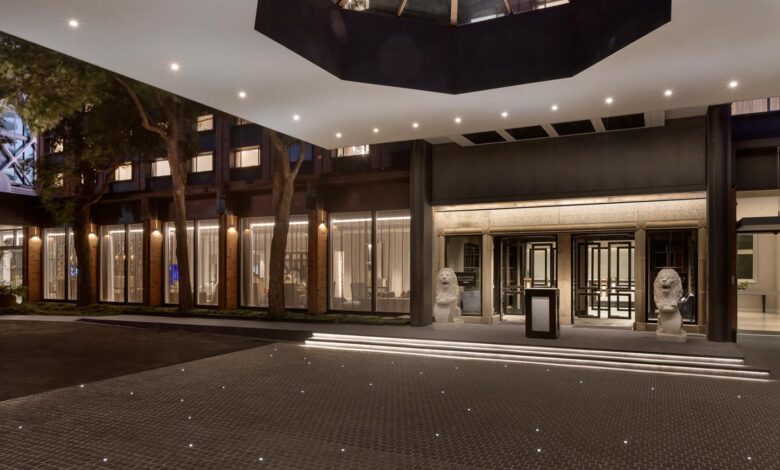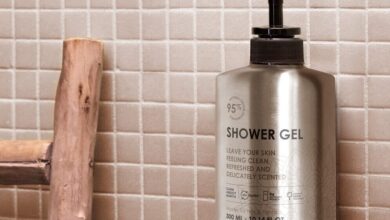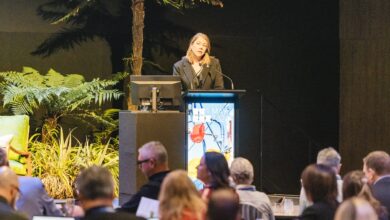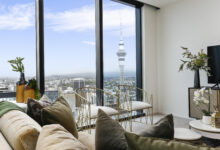
Op-ed: “No immediate return to 2019” for trans-Tasman hotel industry despite green shoots
JLL’s Ross Beardsell and Vibhor Kalra on why forecasts suggesting an inbound recovery may be optimistic
The opening of new high-quality hotels in Auckland painted an encouraging picture for JLL’s Ross Beardsell and Vibhor Kalra during their recent visit to AHICE NZ, but indicators suggest there is still some way to go before either New Zealand or Australia can claim “it’s back to 2019”.
The shellacking of Australia by the Black Caps in the opening game of the T20 World Cup came (fortunately for us Aussies) after we’d left Auckland’s AHICE, but still, there was plenty of rivalry between the two countries as to who was leading in the post-COVID hotel recovery stakes.
Our latest AccomNews print issue is available now! Read it HERE.
The general consensus was that Auckland was some four months behind Sydney and Melbourne in terms of hotel recovery.
Both countries are facing significant shortfalls in inbound visitors, and while Australian short-term arrivals in August 2022 rose to 56 per cent compared to the same month in 2019, a forensic review of the figures showed that the majority of visitors were in the ‘VFR’ category, staying in relatives’ homes and not comparable to the higher-yielding cohort of tourists who were visiting pre-COVID.
At best, forecasts are suggesting a recovery in inbound visitors of up to 70 per cent (of pre-COVID levels) by mid-2023. Even this might be overly optimistic given that Australia attracted 1.4 million Chinese tourists, and New Zealand 407,000 in 2019, and this substantial market isn’t likely to return for the foreseeable future.
In the absence of Chinese visitors, Australia’s fledgling inbound recovery has relied on tourists from New Zealand, India, Singapore, the USA and the UK, whereas New Zealand relied almost exclusively on Australians as vacationers, with Queenstown’s ski slopes driving the business over winter.
Overseas holiday visitors to New Zealand in August 2022 were still barely 40 per cent of August 2019, and the length of stay was significantly reduced, reflecting the loss of long-haul travellers.
Both countries were still experiencing image problems as a result of (perceived) draconian COVID border policies, and while entry restrictions have been relaxed and new international marketing campaigns launched, the negative publicity generated during the COVID pandemic is likely to stymie inbound recovery for some time.
Another common challenge for the hotel sectors of both countries is that after two and a half years of being in lockdown, Australians and New Zealanders are increasingly looking to holiday overseas.
Airport chaos in Europe and high airfares have kept many potential holiday travellers home in 2022, but this will change from next year as airline capacity increases and prices drop.
This will then reduce the availability of domestic travellers to prop up local markets, and boom times experienced in regional holiday destinations over the past three years could be threatened.
We have already witnessed short-haul international holiday destinations such as Bali and Fiji making a serious come-back, and with Japan finally re-opening, Australian skiers will now have an alternative to Queenstown and Thredbo to get their down-hill skiing fix.
The biggest setback for CBD hotels in Sydney, Melbourne, Auckland and Wellington is the restrained demand in the corporate and conferencing space, and the return – or non-return – of corporate travel was one of the keenest areas of discussion during AHICE.
While a recent JLL New Zealand ‘office market snapshot’ showed very tight vacancy rates in Auckland and Wellington CBD properties, a survey by the University of Otago in May revealed that 89% of those surveyed wanted to remain working from home, at least part-time. This was reflected in office utilisation rates in Auckland in the low 20 per cents in May, though the return to office has accelerated since then.
In Sydney, the Property Council of Australia’s September office occupancy figures showed the city had stalled at 52 per cent, while Melbourne was at just 41 per cent and Canberra office occupancy actually declined from 64 per cent in August to 54 per cent.
This didn’t prevent Sydney’s hotels from showing encouraging signs of recovery in September. According to STR, occupancy grew to 71.8 per cent, the highest level since the pandemic, and the ADR of $252 per room was the highest since February 2018. A tentative return of conferences, big sporting events and healthy leisure travel drove the increases.
Across the Tasman in Auckland, STR reported a similarly robust performance in leisure travel, with weekend occupancies, and particularly rates, highlights. Events, major sporting contests and “bleisure” travel have propped up Auckland’s hotel sector, growing ADR levels despite the continued expansion in room supply.
As in Australia, New Zealand developers have prioritised lifestyle brands, with the launch of properties such as QT, Voco, The Fitzroy, Hotel Britomart and SO in recent years. Accor also announced the introduction of innovative lifestyle brands including Tribe, Jo & Joe and Hyde.
The STR figures showed that destinations that have relied heavily on international travel, such as Rotorua, are facing a challenging future, but Queenstown’s diversity as a year-round destination, and its popularity with both the domestic and Australian markets, are seeding encouraging forward bookings.
However, a revival of long-haul markets will be required for a return to pre-COVID profitability levels.
Australia’s prime international destinations, such as Cairns and the Gold Coast, have pivoted to a largely domestic audience, driven by high-level promotion and attractive domestic airfares and packages, but as Australian travellers rediscover international travel, they will be under greater pressure to retain their markets.
Conferences and events are playing a key role in driving Australian CBD hotel recovery, with most city convention centres reporting encouraging forward bookings. Across the Tasman, on the other hand, the lack of large-scale convention centres in Auckland and Wellington will hurt both cities in the immediate term, though the Wellington Convention & Exhibition Centre is reporting 78 events on its books for the three years after its scheduled opening in June 2023.
Increased air capacity is on the horizon for both countries, but as the largest export earner, the return of inbound tourism is even more critical to New Zealand’s economic recovery.
The consensus at AHICE New Zealand was that despite the tourism industry’s $3.87 billion contribution to tax revenues in 2019, the Government has been slow to assist the sector. Attracting backpackers, students and skilled workers to work in hotels is still being constrained by entry and visa requirements, while tourists remain reticent about breaching what is still perceived by many as ‘fortress New Zealand’.
What is common to both countries is that while the past two years have been difficult, the industry has witnessed one of the largest-ever expansions of quality hotels and brands in key destinations.
So, yes, the short-term revival of New Zealand’s hotel sector may be slower than in some other countries, but at least the framework is in place to generate a sustained long-term
Ross Beardsell and Vibhor Kalra are Senior Executives with JLL Hotels & Hospitality Group
Ross Beardsell has over three decades of experience in the hotel industry in senior management roles in operations and development. Working initially with Southern Pacific Hotels, then IHG and the Carlson Group, Ross worked in GM positions across the Asia Pacific. In 2008, he joined JLL’s Hotels & Hospitality Group, providing asset management services on behalf of hotel owners to maximise profitability and to provide strategic guidance. He has provided hotel advisory services to the owners of luxury, upscale, mid-market, new hotels, limited-service accommodation, resorts, convention hotels, and pubs – both nationally and internationally.







